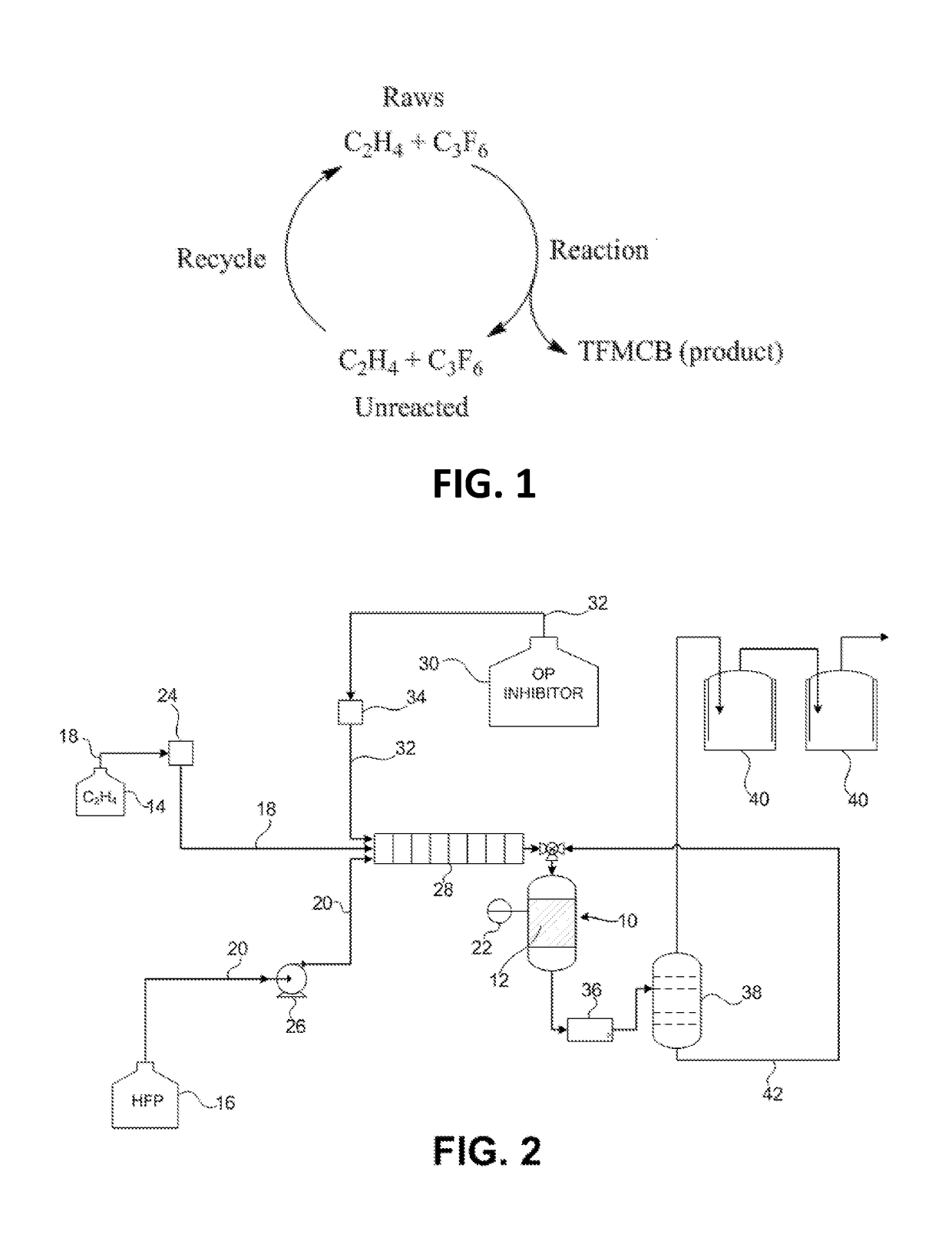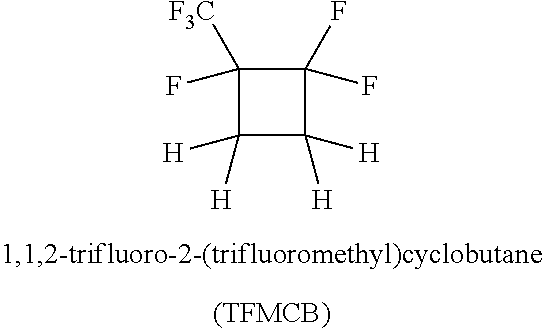Process for the production of fluorinated cyclobutane
a technology of cyclobutane and cyclobutane, which is applied in the field of production of 1, 1, 2trifluoro2(trifluoromethyl) cyclobutane, can solve the problems of low atom efficiency percentage, failure to recognize, and inconvenient commercial production
- Summary
- Abstract
- Description
- Claims
- Application Information
AI Technical Summary
Problems solved by technology
Method used
Image
Examples
example 1
Continuous Reaction of Ethylene and HFP with Monel (Alloy 400) Packing
[0065]A mixture of ethylene (245 sccm via mass flow controller) and liquid HFP (0.61 ml / minute via liquid pump) was constantly fed to a stainless steel tubular reactor (24×1.25 inch) packed with Monel Propak® at 760-810 psig and 335° C. for 3 hours (contact time, about 10 min). Before the reactants passed to the main reactor they were passed through a premixer (12×0.75 inch with a static mixer) at 150-180° C. Under these conditions, analysis of the exit gases by GC indicated 17% conversion of HFP to TFMCB and 79% selectivity.
example 2
Continuous Reaction of Ethylene and HFP with Nickel (Alloy 200) Packing
[0066]The reaction was carried out in the same manner as in Example 1 except that alloy 200 (nickel) packing was used in place of Monel. Under these conditions, analysis of the exit gases by GC indicated 16% conversion of HFP to TFMCB and 86% selectivity.
example 4
Continuous Reaction of Ethylene and HFP with Monel Packing for 5 Hours
[0068]Ethylene (21 g / h) and HFP (84.8 g / h) were continuously fed into a stainless steel tube reactor (24×1.25 inch, heated zone 12 inch) packed with Monel packing for 5 hours at 335° C. and 760-810 psig. The contact time was about 10 minutes. GC analysis of exit gases indicated 14% conversion of HFP to TFMCB. A total of 509 g HFP was passed through the reactor over 5 hours and collected 83 g of liquid product containing 80% TFMCB by GC, with collected yield of 80% based on conversion of HFP.
PUM
| Property | Measurement | Unit |
|---|---|---|
| pressure | aaaaa | aaaaa |
| pressure | aaaaa | aaaaa |
| pressure | aaaaa | aaaaa |
Abstract
Description
Claims
Application Information
 Login to View More
Login to View More - R&D
- Intellectual Property
- Life Sciences
- Materials
- Tech Scout
- Unparalleled Data Quality
- Higher Quality Content
- 60% Fewer Hallucinations
Browse by: Latest US Patents, China's latest patents, Technical Efficacy Thesaurus, Application Domain, Technology Topic, Popular Technical Reports.
© 2025 PatSnap. All rights reserved.Legal|Privacy policy|Modern Slavery Act Transparency Statement|Sitemap|About US| Contact US: help@patsnap.com



